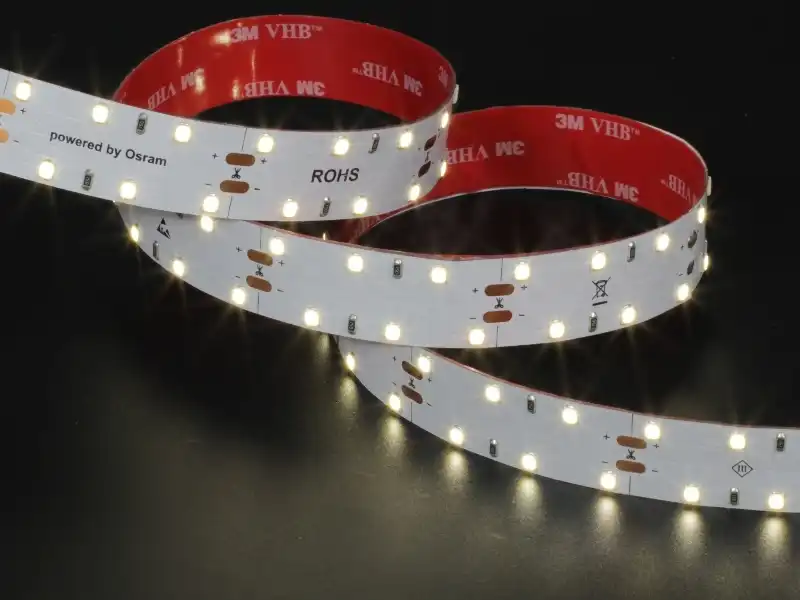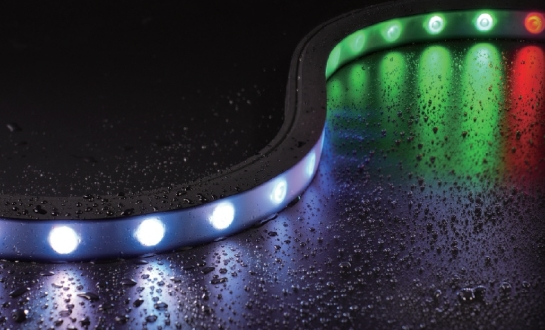Grasping Control Protocols for LED Strips
DMX (Digital Multiplex) Protocol
DMX, short for Digital Multiplex, is a robust protocol widely used in the entertainment industry for controlling lighting fixtures. When applied to LED strips, DMX offers granular control over individual LEDs or segments, allowing for intricate color mixing and dynamic effects. The protocol's ability to manage up to 512 channels per universe makes it ideal for complex lighting setups, enabling precise synchronization of multiple LED strips across large installations.
Integrating LED strips with DMX requires compatible controllers and receivers. These devices translate DMX signals into instructions for the LED strip, controlling attributes such as brightness, color, and effects. The flexibility of DMX allows for seamless integration with other lighting fixtures, creating cohesive lighting designs that can be easily programmed and modified in real-time.
DALI (Digital Addressable Lighting Interface) Protocol
DALI, or Digital Addressable Lighting Interface, is a protocol designed specifically for lighting control in commercial and architectural applications. When integrating LED strips with DALI, users benefit from a standardized system that allows for individual addressing of up to 64 devices on a single bus. This capability enables precise control over different sections of an LED strip installation, making it ideal for creating dynamic lighting scenes in offices, museums, or retail spaces.
The bidirectional nature of DALI communication allows for status feedback from LED strips, providing valuable information about power consumption, lamp life, and potential faults. This feature enhances maintenance efficiency and enables advanced energy management strategies. DALI's compatibility with building management systems further expands the potential for LED strips to be integrated into comprehensive smart building solutions.
Zigbee Protocol for Wireless Control
Zigbee offers a wireless alternative for controlling LED strips, making it particularly suitable for retrofit installations or situations where running control cables is impractical. This low-power, mesh network protocol allows for the creation of extensive lighting networks that can easily scale to cover large areas. When integrating LED strips with Zigbee, users can leverage the protocol's robust security features and interoperability with a wide range of smart home devices.
The mesh topology of Zigbee networks enhances reliability by allowing data to be routed through multiple nodes, ensuring commands reach their destination even if one node fails. This resilience, combined with Zigbee's low latency, makes it an excellent choice for responsive lighting control in both residential and commercial settings. The protocol's support for over-the-air updates also ensures that LED strip installations can be easily maintained and upgraded over time.
Implementation Strategies for LED Strip Integration
Hardware Considerations
Successful integration of LED strips into DMX, DALI, or Zigbee systems begins with selecting the appropriate hardware. For DMX integration, LED strips require compatible receivers or decoders that can interpret DMX signals and translate them into appropriate voltage levels for the LEDs. These decoders often support multiple universes, allowing for control of longer LED strip runs or more complex installations.
DALI integration typically involves DALI-compatible LED drivers or controllers that can interface directly with the DALI bus. These devices handle the addressing and communication protocols, enabling seamless integration with existing DALI networks. Some advanced LED strips come with built-in DALI interfaces, simplifying the installation process and reducing the need for additional hardware.
For Zigbee integration, wireless controllers or gateways are essential. These devices bridge the gap between the Zigbee network and the LED strips, translating wireless commands into appropriate control signals. Many Zigbee-enabled LED controllers also offer additional features such as grouping, scheduling, and scene creation, enhancing the versatility of the LED strip installation.
Software and Programming Considerations
The software aspect of integrating LED strips with advanced control protocols is crucial for realizing the full potential of these systems. For DMX setups, lighting control software allows for the creation of complex scenes, effects, and animations. These programs often provide intuitive interfaces for mapping DMX channels to specific LED strip segments, enabling precise control over color, brightness, and effects.
DALI systems benefit from commissioning software that simplifies the process of addressing and configuring LED strips within the network. These tools often provide graphical interfaces for creating lighting scenes, setting schedules, and managing energy consumption. Integration with building management systems may require additional software layers to ensure seamless communication between different systems.
Zigbee integration often leverages smartphone apps or dedicated control panels for everyday operation. These interfaces allow users to adjust lighting settings, create scenes, and set schedules with ease. For more advanced applications, developers can utilize Zigbee development kits and SDKs to create custom control solutions tailored to specific project requirements.
Calibration and Testing
Proper calibration is essential for ensuring consistent performance across integrated LED strip installations. This process involves adjusting color output, brightness levels, and dimming curves to achieve uniform lighting across different strips and to match other lighting fixtures in the space. Specialized calibration tools and software can greatly simplify this process, allowing for precise adjustments based on measured light output.
Thorough testing is crucial to verify the reliability and responsiveness of the integrated system. This includes stress testing to ensure stable performance under various conditions, latency testing to check response times, and compatibility testing with other devices in the network. For DMX and DALI systems, signal integrity should be verified to prevent data loss or corruption that could lead to erratic behavior.
Advanced Applications and Future Trends
Intelligent Lighting Systems
The integration of LED strips with DMX, DALI, or Zigbee protocols paves the way for intelligent lighting systems that go beyond simple on/off control. These advanced setups can incorporate sensors for occupancy detection, daylight harvesting, and environmental monitoring. By leveraging these inputs, LED strip installations can automatically adjust their output to optimize energy efficiency, enhance user comfort, and support circadian rhythms.
Machine learning algorithms can be employed to analyze usage patterns and refine lighting scenarios over time, creating truly adaptive environments. For instance, in retail spaces, integrated LED strips could dynamically adjust color temperature and intensity based on foot traffic patterns, time of day, or even inventory levels, subtly influencing customer behavior and enhancing the shopping experience.
Interactive and Responsive Environments
The precise control offered by DMX, DALI, and Zigbee integration enables the creation of interactive lighting installations that respond to user input or environmental stimuli. In public spaces, LED strips could be programmed to create dynamic light art that reacts to sound, movement, or social media interactions. This level of interactivity transforms static architectural elements into engaging, ever-changing experiences.
In smart home environments, integrated LED strips can sync with entertainment systems, enhancing the immersion of gaming or movie-watching experiences. The low latency of these control protocols ensures that lighting effects can keep pace with fast-paced content, creating a seamless audiovisual experience.
IoT Integration and Smart City Applications
As the Internet of Things (IoT) continues to expand, LED strips integrated with DMX, DALI, or Zigbee are well-positioned to become key components of smart city infrastructure. These versatile lighting solutions can serve multiple purposes beyond illumination, such as providing visual indicators for traffic flow, emergency alerts, or public transportation status.
In smart buildings, integrated LED strips can contribute to comprehensive energy management strategies, adjusting their output based on real-time energy pricing or grid demand. The data collected from these systems can provide valuable insights into building usage patterns, helping facility managers optimize operations and reduce environmental impact.
Conclusion
The integration of LED strips with advanced control protocols like DMX, DALI, and Zigbee represents a significant leap forward in lighting technology. These systems offer unprecedented levels of control, efficiency, and creativity, enabling the creation of dynamic, responsive lighting environments that can adapt to any need or situation. As technology continues to evolve, we can expect even more innovative applications that push the boundaries of what's possible with integrated LED lighting solutions. For those looking to explore the cutting edge of LED strip integration, the possibilities are truly limitless. If you're interested in learning more about how these advanced lighting solutions can benefit your project, don't hesitate to reach out to our team of experts at Linda@uc-led.com.







